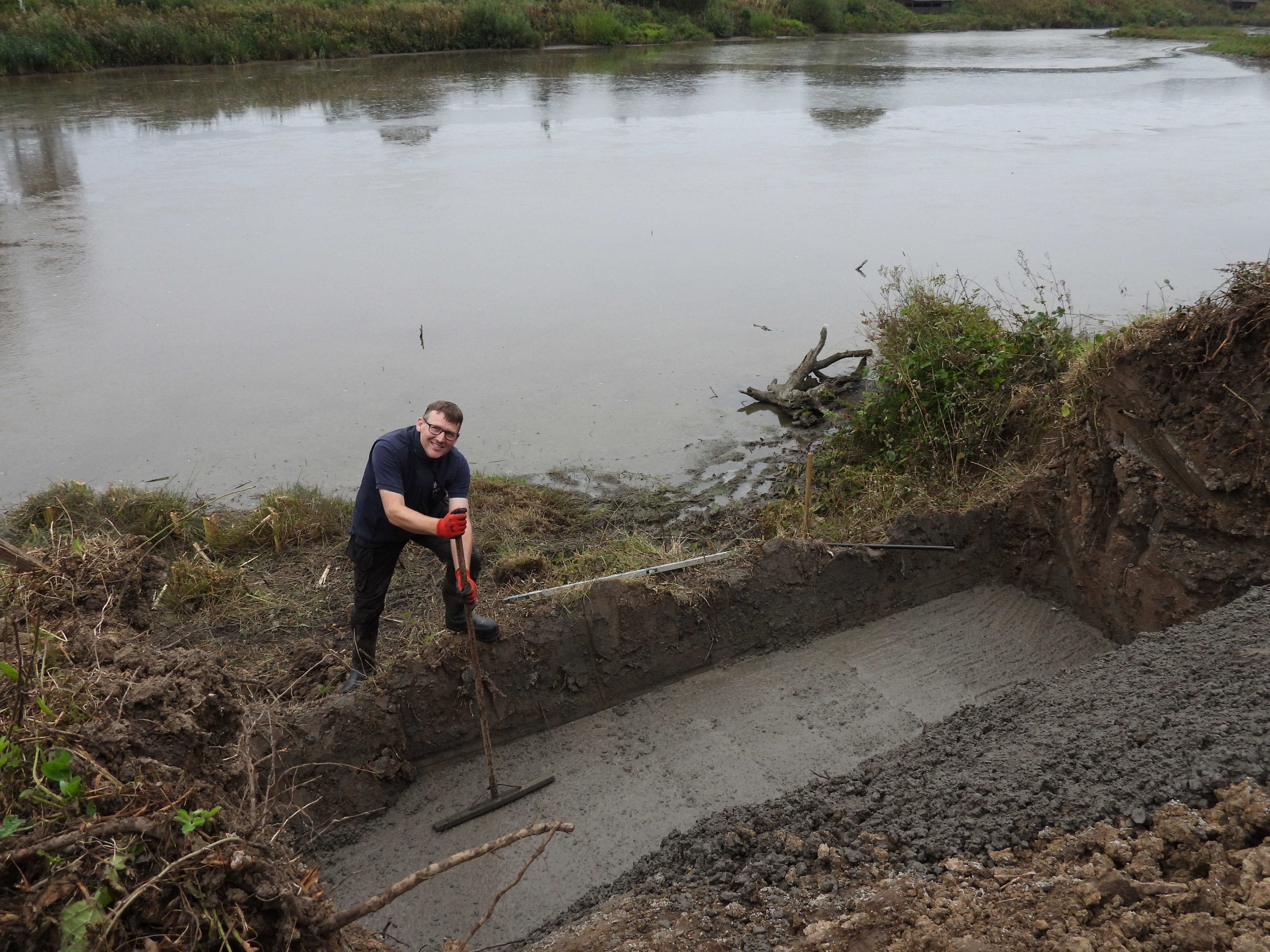An artificial sand martin bank – with space for a potential 100 nesting pairs – is being built at a Wearside wetland reserve.
Work began this week on the creation of the bank at WWT Washington Wetland Centre, which welcomes the migratory birds from April onwards each year, when they return to the UK after overwintering in Africa.
Sand martins (Riparia riparia) – the smallest of the European hirundine family, which includes swallows and house martins – typically hunt and feed over the site’s Wader Lake in spring and have previously been noted attempting to dig natural nesting chambers in the sandy banks along the water’s edge, but with no success.
Now it’s hoped that the artificial bank, which will be made using cavity blocks fitted with nesting tubes, will provide the conditions needed for the species to finally settle and breed on site for the first time on record.
Reserve Manager John Gowland, said: “Sand martins are one of the first spring migrants to arrive on our reserve each breeding season and are a favourite with our visitors and members.
“They can often be seen feeding on flying insects while on the wing over Wader Lake, with their continuous twittering song filling the air.
“A small number used to nest in the banks of the River Wear in the 1970s but unavoidable anti-erosion work removed the sandy deposits that they were using.
“We’ve also previously scraped back the banks of Wader Lake in the hope it would encourage them to nest, but the material wasn’t suitable for them.
“Now, as part of our ongoing development of the lake, we’re opting to build this artificial bank instead and are very hopeful it will mean the start of this beautiful species breeding on site for the first time on record.”
WWT Washington’s sister site WWT London Wetland Centre, in Richmond, has seen great success since establishing its own sand martin bank in 2003.
From an initial seven or so pairs attempting to nest in the first season, an incredible 87 chambers were in use just four years later.
John added: “Seeing the success of this kind of build at WWT London has set a great precedent and we’re confident that we can repeat that here in the North East.
“Sand martins are used to their natural nesting sites collapsing, so they easily adapt to settling in new ones, and as they are colonial nesters, the fact that we’ll be providing space for a large group of them should make the habitat even more inviting.
“We can’t wait for their return this coming spring to watch the action unfold.”
Did you know?
- Sand martins are the smallest of the European hirundine family, which includes swallows and house martins.
- They have dark brown upper parts and dark under wings, contrasting with otherwise pale under parts divided by a distinctive dark chest bar.
- They are found along rivers and other water bodies throughout the UK and also around man-made gravel pits, where artificial nesting banks – such as the one being created at WWT Washington – are sometimes provided.
- The sand martins’ twittering song is continuous when the birds are on the wing but becomes a conversational undertone after they have settled in the roost.
- They are agile fliers and feed mainly over wetlands.
- They will perch on overhead wires or branches.
- During the past 50 years, the European population has crashed on two occasions as a result of drought in their African wintering grounds.
The concrete foundations of the sand martin bank were laid at WWT Washington this week, with the rest of the build taking place across a few days from Monday 2 October.
The development is part of stage three of an ongoing desilting project at the site’s Wader Lake, which has already led to a duckling baby boom this past summer.
The latest works will also see the creation of increased diving duck habitat, management of vegetation in front of the birdwatching hides and a temporary replacement for the now-demolished Princes’ Trust Hide, with plans for its permanent successor still being finalised.
Ready to visit?
If you’ve been inspired to visit WWT Washington and see incredible wetland wildlife for yourself, you can find out more and plan your day online here.

